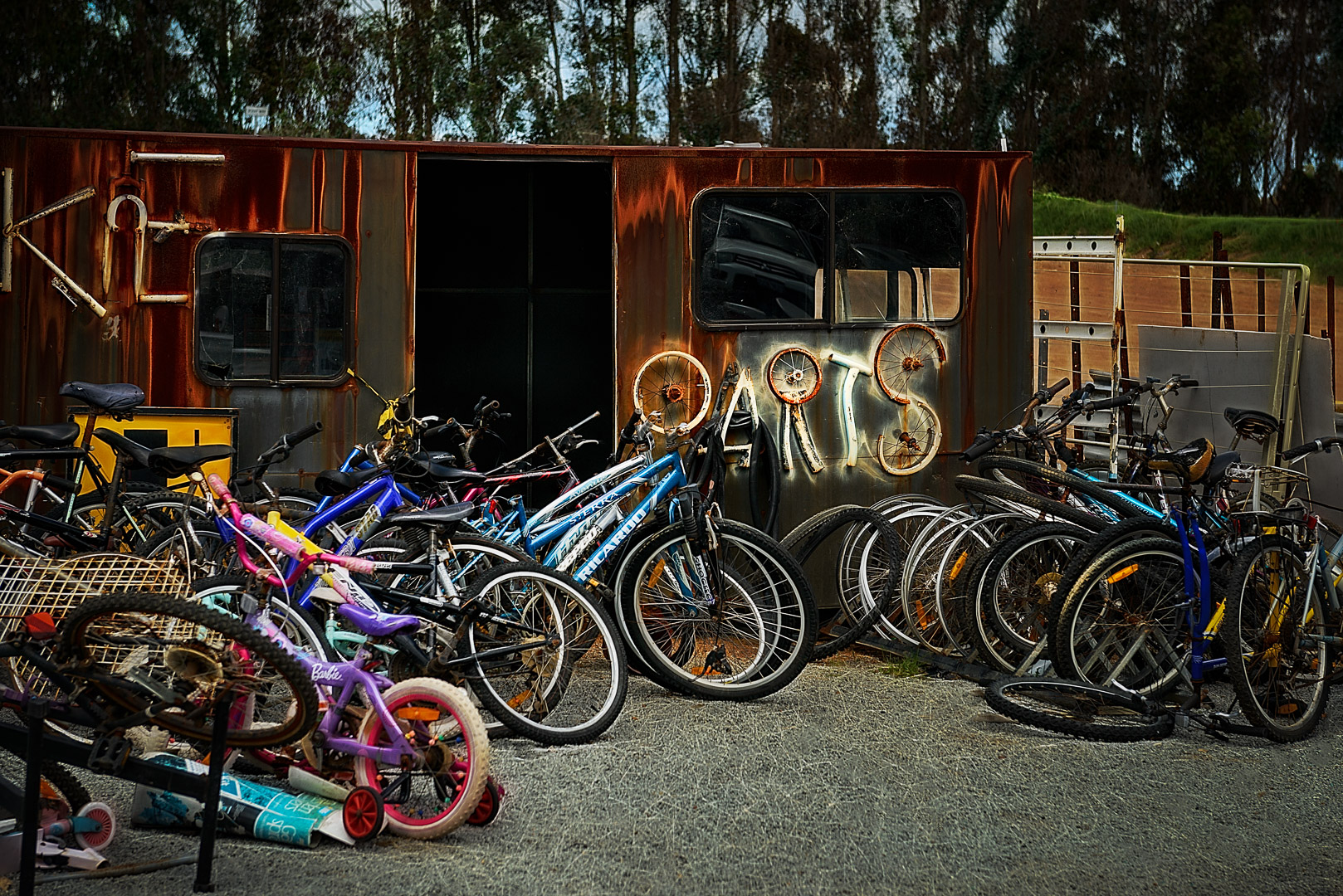
When it comes to shopping, is there anything better than an outlet mall? Amazing sales, deep discounts, and significant savings abound, all in one place. However, the problem is that what seems like an amazing place to score great deals can actually end up being a spending trap – especially if those so-called “deals” aren’t all that great.
A savvy outlet mall shopper knows that just because something has a sale tag on it doesn’t necessarily mean it’s a worthy discount. In fact, some of the secrets behind how outlet malls actually operate could surprise you – and make you think twice before pulling out your wallet the next time you visit one.
Savvy Shopping at the Outlets
You can find amazing deals on clothes, home goods, sporting goods, and everything else at the outlets, as long as you spend carefully and do your homework. Understand how they work, and use a discerning eye when it comes to that giant “SALE!” sign on the front door of your favorite store.
1. Understand the Difference Between Types of Outlet Stores
Not all outlet stores are created equal, and discounts vary between them. There are generally four types you should know about: outlet, factory, retail, or refurbished. When in doubt, ask a store employee what type of products are sold there to know what kind of deals to expect.
True Outlet Stores
True outlets carry merchandise that was originally stocked in regular retail stores and has been discontinued or phased out due to the shopping season, resulting in steep discounts. These stores also often carry damaged goods, so always check items carefully for irregularities before you buy anything. Examples of stores in this category include the following:
True outlets carry merchandise that was originally stocked in regular retail stores and has been discontinued or phased out due to the shopping season, resulting in steep discounts. These stores also often carry damaged goods, so always check items carefully for irregularities before you buy anything. Examples of stores in this category include the following:
- Lands’ End
- REI
- Old Navy
- Levi’s
- Lululemon
- Champion
- Eddie Bauer
- Nine West
- Children’s Place
- Chico’s
- Motherhood Maternity
Factory Stores
Factory stores sell goods that were specifically produced for outlet malls. While these items may look like those in regular retail stores and bear the same name, they’re usually made with cheaper fabrics or fewer features than their full-price counterparts. For example, a dress carried in a J. Crew retail store might be designed without the expensive lining and fabrics and then sold through the J. Crew outlet. Stores that sell outlet goods specifically include:
Factory stores sell goods that were specifically produced for outlet malls. While these items may look like those in regular retail stores and bear the same name, they’re usually made with cheaper fabrics or fewer features than their full-price counterparts. For example, a dress carried in a J. Crew retail store might be designed without the expensive lining and fabrics and then sold through the J. Crew outlet. Stores that sell outlet goods specifically include:
- Nike
- J. Crew
- Crewcuts
- Polo Ralph Lauren
- GUESS
- Calvin Klein
- Gymboree
- Loft
- Coach
- Banana Republic
- Coldwater Creek
- Oakley
- Ann Taylor
Retail Stores
Retailers that want to take advantage of the foot traffic in outlet malls sometimes purchase store space there without actually offering outlet products. Designated “outlet” stores, on the other hand, should notify buyers somewhere on the store sign so you don’t get caught paying retail price unknowingly. Some retail stores that simply operate space in outlet malls include:
Retailers that want to take advantage of the foot traffic in outlet malls sometimes purchase store space there without actually offering outlet products. Designated “outlet” stores, on the other hand, should notify buyers somewhere on the store sign so you don’t get caught paying retail price unknowingly. Some retail stores that simply operate space in outlet malls include:
- Famous Footwear
- American Eagle
- Maurice’s
- Charlotte Russe
- Columbia Sportswear
- Sunglass Hut
- Zumiez
- PacSun
- Aeropostale
Refurbished Electronics Stores
Many electronics manufacturers sell refurbished goods such as computers, TVs, and stereo systems at outlet malls. They are less common than clothing or sporting goods stores, but if you happen upon one, you might be able to snag a deal on refurbished goods classified as “like new.” Just make sure that whatever you buy comes with a warranty, which is standard among refurbished retailers.
Many electronics manufacturers sell refurbished goods such as computers, TVs, and stereo systems at outlet malls. They are less common than clothing or sporting goods stores, but if you happen upon one, you might be able to snag a deal on refurbished goods classified as “like new.” Just make sure that whatever you buy comes with a warranty, which is standard among refurbished retailers.
Some electronics companies that have brick-and-mortar refurbished outlet stores include the following:
- Bose
- Nikon
- Dell
- Toshiba
- KitchenAid
Obviously, deals vary based on your location and which stores are available to you.

2. Get the Inside Scoop
Before I visit an outlet mall, I always view its website. By doing so, you can see which stores have promotions and sales, and even download online coupons. If there is no website for the outlet mall you plan to visit, or you don’t find any coupons online, stop first at customer service, where you may find coupon books and information sheets. You can also join outlet mall loyalty programs to receive things like points for purchases, exclusive coupons, and notifications of sale dates.
3. Set a Shopping Budget
If you go shopping without a budget, you’re bound to spend more than you’d like as you’re lured into store after store. Because outlet malls usually have plenty to choose from, I rarely set a store-to-store budget. However, before you head out for the day, make sure you have a “cap” on how much you plan to spend.
A surefire way to stay within your limits is to withdraw the amount you plan to spend in cash, and when it’s gone, stop shopping and go home. If you’re nervous about carrying that much cash with you, you can load up a prepaid debit card with the same amount and still stay within your budget for the day.
4. Check Prices Online
The folks who operate outlet stores are masters of enticing customers to spend. They know that outlet mall shoppers are looking for good deals and are more likely to buy something if it’s marked down – so they often proclaim sales, even when prices aren’t deeply discounted.
Before you snatch up that scarf or purse, try scanning the bar code with a smartphone shopping app such as ShopSavvy or RedLaser. Both check prices for the store you’re in, nearby brick-and-mortar stores, and online retailers to make sure you’re getting the best deal – with or without the giant sales tag.
5. Shop Close to Home
There’s a reason outlet stores are usually found off the beaten path and away from metropolitan areas: They need a lot of space, and land is cheaper in the boonies. However, there’s also another reason that outlet mall owners don’t mind building away from large cities: Shoppers are more inclined to “make a day of it” when the stores are an hour or so away. When you shop farther away from your home or hotel, you may feel more pressure to get your money’s worth and spend a lot on deals you feel you can’t get anywhere else.
I was surprised to see how much my shopping habits changed when a new outlet mall opened closer to my home. Previously, when the closest one was 90 miles away, I’d stay all day and spend like crazy to make it worth my while. This year a new outlet mall opened just 30 miles from my home, and I feel much less pressure to spend because I can go back anytime I want. Therefore, I don’t blow my entire budget in one trip. The moral of the story is, when it comes to outlet shopping, the closer to home, the better.
6. Go for Major Sale Weekends
One way to make sure you get the most out of your outlet mall experience is to plan your shopping trips around popular holiday sales, such as Black Friday. Because of stiff competition against regular malls and other stores within the outlet mall for your foot traffic, they’re prone to give steep discounts, release coupons, and bring in new stock for the masses.
Some of the best weekends to shop include the following:
- Memorial Day weekend
- The Fourth of July
- Labor Day weekend (especially for back-to-school specials)
- The weekend after Thanksgiving
You’re likely to see busy crowds around holiday weekends, but that’s easily compensated for by the discounts.
7. Use Coupons With Caution
There’s nothing like getting an additional price reduction on an item that’s already on sale. Just use coupons carefully when at the outlet mall. Sometimes, what you think is a coupon to Gap Outlet is actually a coupon to Gap, an entirely different store.
Usually, if the brand has both outlet and regular stores, the coupon must say “outlet” or “factory” somewhere to be eligible for use at the outlet mall. Still, it never hurts to ask whether or not a coupon is valid, especially if there’s potential for added savings.
If you’re a member of an outlet mall loyalty program, you can receive coupons via email or home postal mail. Just be sure to check the dates so you only shop when they’re valid.
8. Dig for Clearance Deals
Like their regular retail counterparts, outlet stores are laid out for maximum customer spending. That means more expensive and full-priced goods are at the front, while clearance and more heavily discounted deals are in the back.
Plan enough time to really dig through the merchandise and you can score the best bargains. Don’t be afraid to make a beeline for the clearance racks, and check for additional discounts on top of closeout products. Of course, it never hurts to ask a sales associate about current deals – they’re usually happy to point the way to any promotions.
9. Check the Return Policy
While you’re hemming and hawing over that sweater, it’s a good time to ask a sales associate about the store’s return policy. Outlet stores often have limited return policies, and some items may actually be final sale – which might affect your decision whether to make certain purchases.
Proximity of the outlet mall to your home is another factor to consider when contemplating returning items. If you’re traveling or visiting from another city, the chances of you actually getting back there before the return policy window is up are pretty slim. Don’t buy anything unless you’re sure you want it, since there’s a good chance it’s yours for good.

10. Don’t Assume the Outlet Is Cheaper
Never assume something is a good deal just because you found it at an outlet mall. Sometimes, regular malls offer the same discounts without all the digging – and they’ve got better return policies. Check your shopping app to make sure you’re getting a good deal.
Big sale weekends and sidewalk sales in regular malls could net you higher-quality items for comparable prices, so it’s worth the extra look before you splurge on something at the outlet mall. This is definitely a benefit if you’re searching for quality over quantity. And, if you’re savvy on a sale weekend, heading to the retail mall for great deals on good-quality stuff may save you money over paying for a lower-quality item at the outlet.
Of course, when it comes to stuff like kids’ clothes, seasonal shoes, and trendy items, you shouldn’t mind lower quality. If you’re looking for something that you want to last forever, though – a leather jacket or little black dress, for example – it’s probably best to head to the retail store.



























